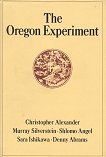Volume 3 describes how the Timeless philosophy and Pattern Language method was applied to planning for the University of Oregon. It explains the process of piecemeal growth, speading resources evenly and encouraging repair, and contrasts it with the more popular, but potentially disasterous, lump development, which concentrates resources in a few large developments, and correspondingly large mistakes.
